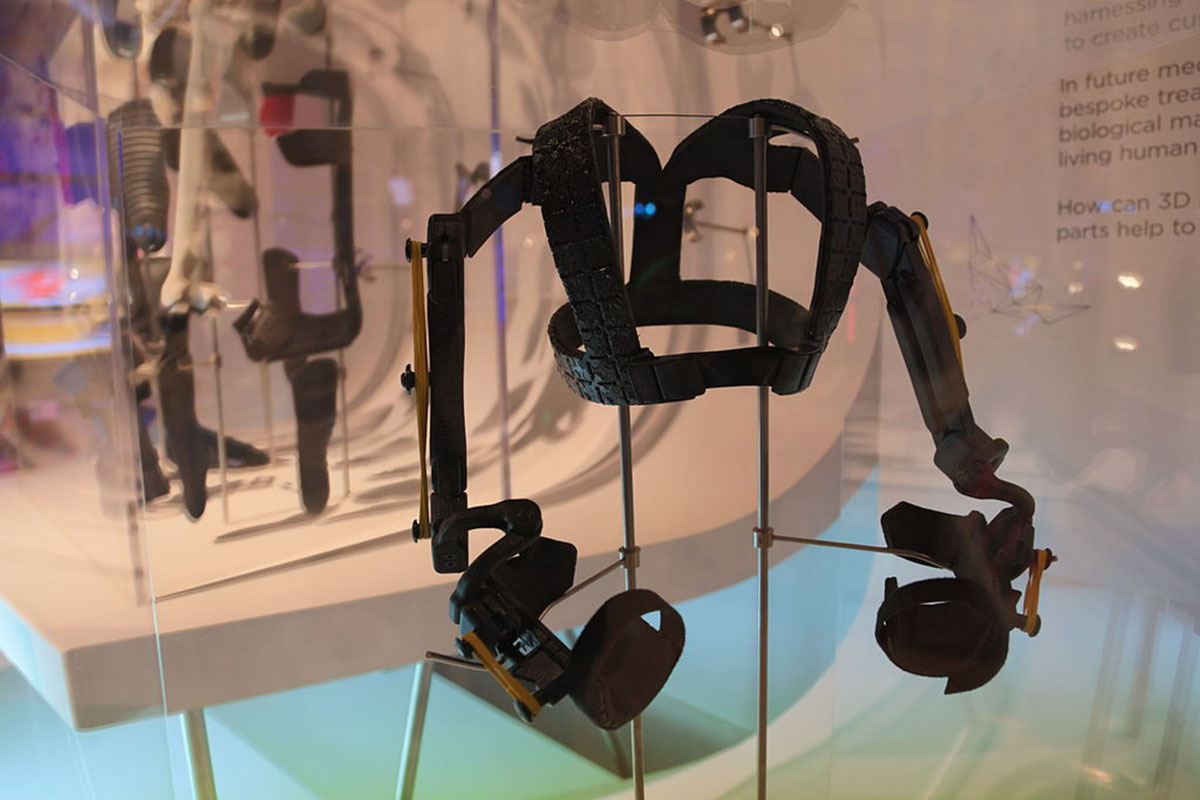Table of Contents
Recently Ivanhoe News Service reported the remarkable story of Hannah Monn, a four-year-old girl born with a disease called arthrogryposis, a condition that affects muscle strength.

Affecting about 1 in 3000 infants, the condition is often diagnosed before birth, and it kills about 50% of infants born with it in the first year of life. Children who survive the first year of life with the condition have to deal with extremely weak muscles and stiff joints, and often have to endure multiple surgeries to have any motion at all.
Hannah survived infancy, but by the age of three she was essentially immobile. “She just really couldn't move at all,” Hannah's mother Jennifer told an Ivanhoe reporter.
Fortunately for Hannah, her mother Jennifer was able to get in touch with a developer of a new technology known as WREX, the Wilmington Robotic Exoskeleton.
Many Children Suffer Muscle Failure
Many children suffer from illnesses that rob them of muscle strength. In addition to arthrogryposis, Duchesne dystrophy and muscular dystrophy take away children's ability to walk, throw and catch a ball, play with toys, and any opportunity to learn to feed themselves and dress themselves and take themselves to the bathroom. Muscular diseases can make it impossible for a child to get a hug. But the Wilmington Robotic Exoskeleton adds power to muscles that parents never dreamed possible.
Because the WREX is made of plastic, it is lightweight and inexpensive. Because it can be printed out, replacing the device as the child grows is simple. And because the Wilmington Robotic Exoskeleton can amplify the powers of muscles, it can give children the ability to move their arms in ways their own bodies simply cannot accomplish. “To see her have the ability to reach her arms out, to reach out and grab something is just a really amazing feeling for a mom,” mom Jennifer Monn told a reporter.
See Also: Dutch Woman Receives 3D Printed Skull
WREX Is Also Being Made Available for Adults
Children are not the only people who can benefit from robotic exoskeleton devices. At least two adults who had arthrogryposis and one who had a spinal degenerative disease have been fitted with the device. Even in adulthood, it became possible for them to feed themselves, use a television remote, and operate a keyboard for the first time in their lives. An unexpected beneficial side effect of the use of the device was relief from the pain and inflexibility of contracted muscles, and a greatly reduced frequency of falls.
- Helping Hannah: 3D Printer to the Rescue. Ivanhoe News Service. 3 January 2014.: Rahman T1, Sample W, Jayakumar S, King MM, Wee JY, Seliktar R, Alexander M, Scavina M, Clark A. Passive exoskeletons for assisting limb movement. J Rehabil Res Dev. 2006 Aug-Sep. 43(5):583-90.
- Photo courtesy of John Cummings by Wikimedia Commons: commons.wikimedia.org/wiki/File:WREX_exoskeleton_at_the_3D,_printing_the_future_exhibition_at_the_Science_Museum,_London.JPG
- Photo courtesy of Creative Tools by Flickr : www.flickr.com/photos/creative_tools/8080028846

